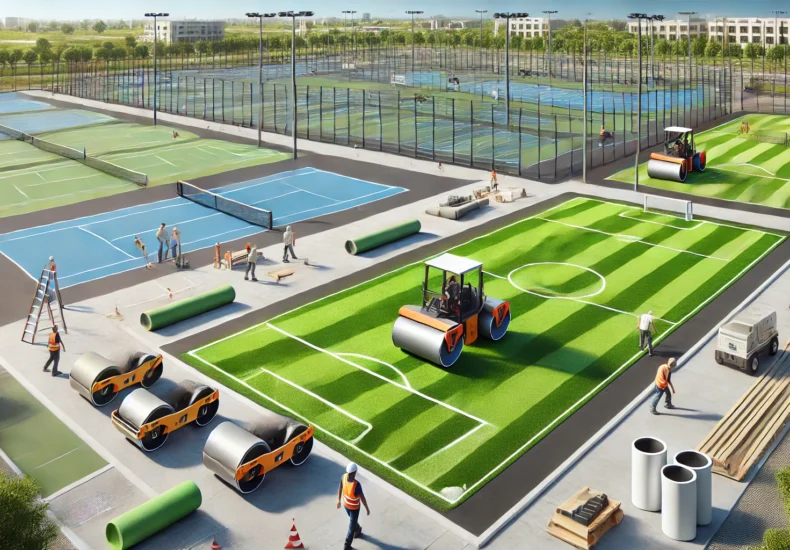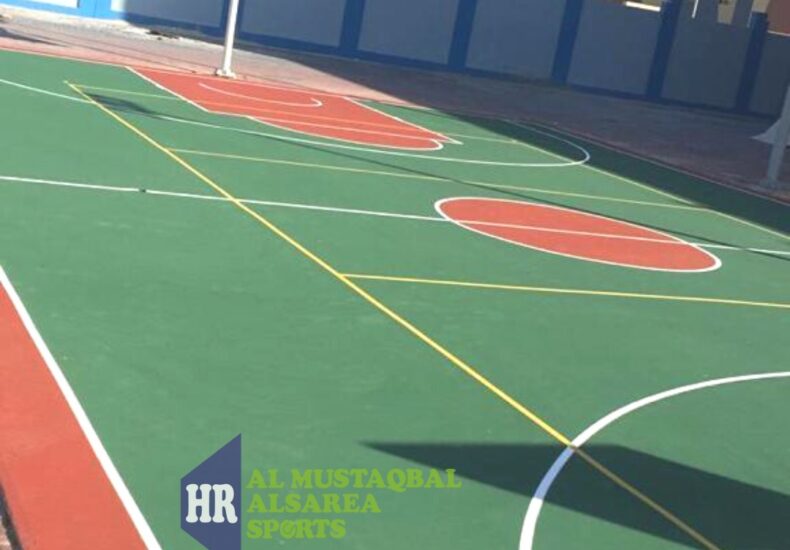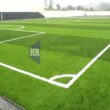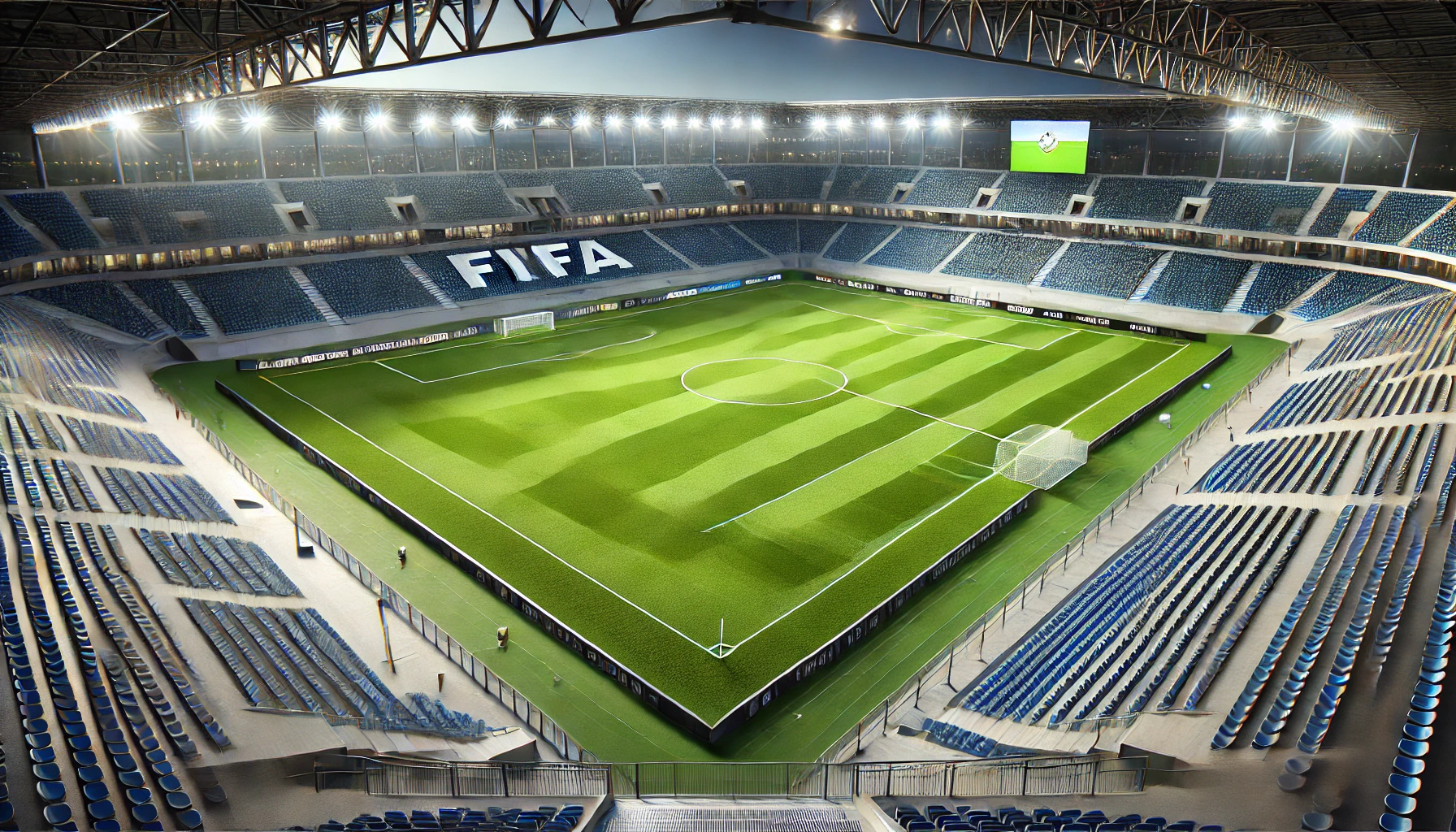
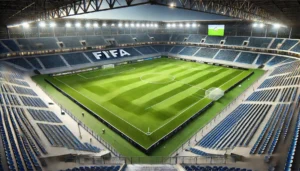
Designing a professional football field is a complex process that requires high precision and adherence to international standards. Whether you are planning to build a football field for a sports academy, a professional club, or even a private facility, following global specifications ensures an optimal playing experience. In this article, we will explore the key steps and standards adopted by Al-Mustaqbal Al-Saree company in designing and installing sports fields to the highest international standards.
1. Choosing the Ideal Location for the Field
Factors Influencing Site Selection:
- Available Space: It should be sufficient to accommodate the field dimensions and surrounding facilities.
- Accessibility: Preferably located near public transportation and service facilities.
- Soil and Terrain: The land should be level and stable to prevent sinking or erosion.
- Drainage and Sewage: An efficient drainage system is necessary to prevent water accumulation on the field.
2. Dimensions of a Football Field According to International Standards
The FIFA and other sports authorities define the standard dimensions for a professional football field. These dimensions include:
- Field Length: Between 100-110 meters.
- Field Width: Between 64-75 meters.
- Penalty Area: 16.5 meters from each side of the goalpost.
- Goal Area: 5.5 meters from the side goalposts.
- Center Circle: A radius of 9.15 meters.
3. Choosing the Right Turf for the Field
Types of Turf Used in Professional Fields:
- Natural Grass: Offers players a more realistic playing experience but requires high maintenance.
- Artificial Turf: Resistant to weather conditions and easy to maintain, making it ideal for multi-purpose sports facilities.
- Hybrid Grass: Combines the benefits of natural and artificial grass, providing greater durability with a natural feel underfoot.
4. Setting Up Lighting and Ventilation Systems
Importance of Optimal Lighting in Professional Fields:
- Ensures clear visibility for players and spectators.
- Enhances the quality of TV broadcasting for matches.
- Compliance with FIFA standards, which require at least 500 lux for local fields and 1500 lux for international matches.
Regarding ventilation, stadium stands should have good ventilation openings, especially in hot climate regions.
5. Planning the Stands and Spectator Facilities
- Stands Design: Should provide a clear view of the field from all angles.
- Service Facilities: Such as restrooms, changing rooms, press conference halls, and designated areas for media personnel.
- Security Systems: Installing emergency exits, surveillance cameras, and metal detectors to ensure the safety of spectators and players.
6. Installing a Drainage System
Water drainage is one of the most crucial factors affecting the quality and lifespan of the field surface. An underground drainage system should be used to quickly remove excess water during rainy periods.
7. Planning Heating and Cooling Areas Based on Climate
- In Cold Regions: Using underground heating systems to prevent grass from freezing.
- In Hot Regions: Installing cooling systems and water sprinklers to maintain turf temperature and reduce evaporation.
8. Implementing Smart Technology in Stadiums
Modern advancements have made stadiums smarter, with technologies such as:
- Goal-Line Technology to ensure accurate goal decisions.
- Electronic Ticketing Systems to streamline spectator entry.
- Smart Cameras to analyze player performance during matches.
9. Regular Field Maintenance
After design and installation, a periodic maintenance plan should be established, including:
- Regularly trimming and cleaning the grass.
- Inspecting and repairing lighting and drainage systems.
- Repainting boundary lines for clear playing area demarcation.
Conclusion
Designing a professional football field is a meticulous process that requires a comprehensive study of all details. Al-Mustaqbal Al-Saree offers integrated solutions for constructing football fields according to the highest global standards, ensuring a professional field that meets the needs of both players and spectators. If you are considering building a professional football field, we are here to assist you step by step in realizing your sports vision with the best possible quality.
